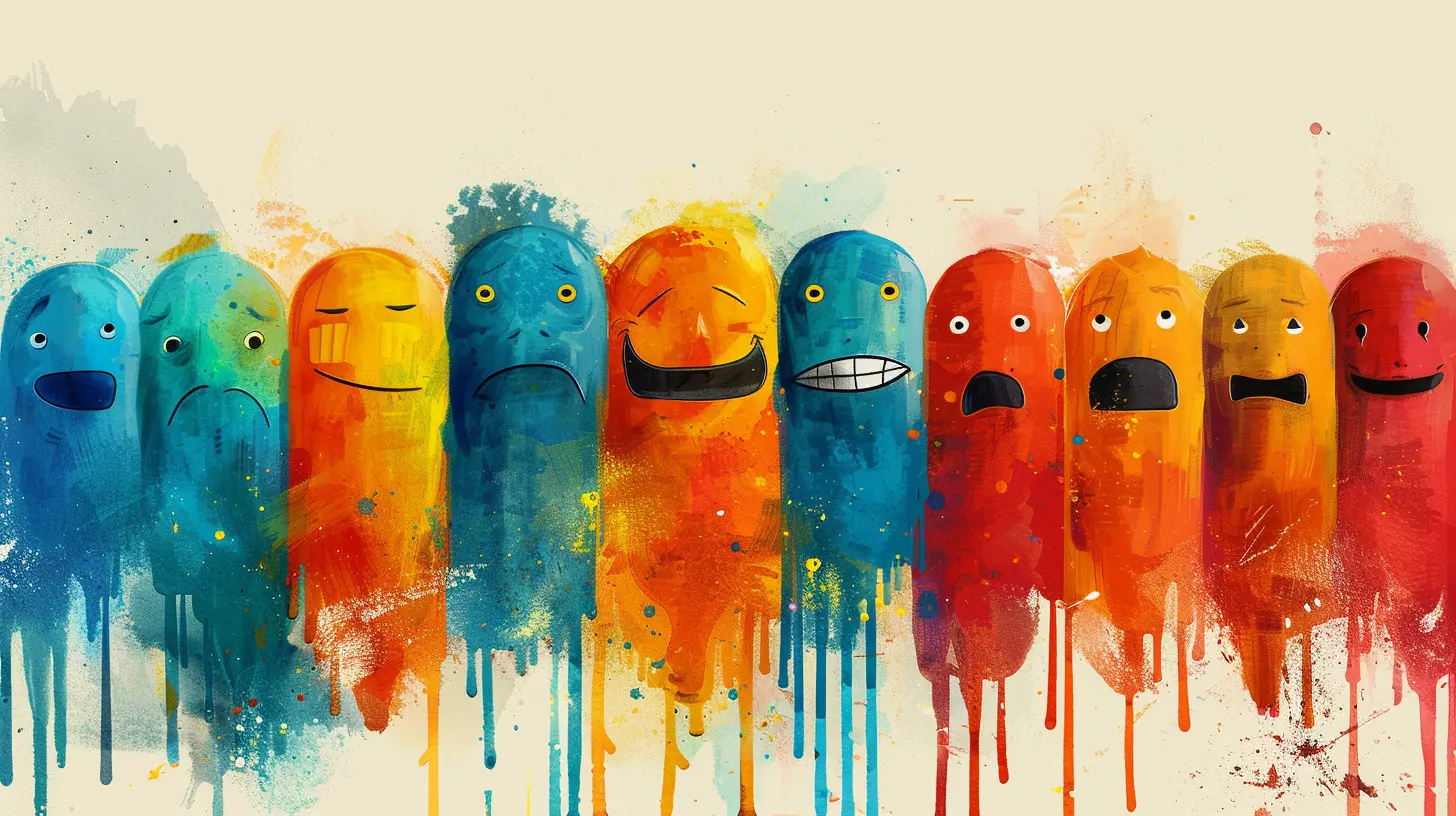The Role of Vulnerability in Group Therapy Success
1 August 2025
Let’s be real for a second—vulnerability isn’t something most of us are taught to embrace. From an early age, we’re encouraged to “stay strong,” “keep it together,” and “never let them see you sweat.” But if you’ve ever dipped your toes into group therapy (or even just considered it), there’s something critical you need to understand: vulnerability isn’t weakness. It’s the secret sauce that makes group therapy actually work.
In this article, we’ll break down why vulnerability in group therapy isn’t just important—it’s the very backbone of healing, connection, and long-term growth. From real talk on what vulnerability looks like to how it creates breakthroughs, we’re diving deep—so let’s get into it.
What Exactly Is Vulnerability?
Let’s clear the air—vulnerability isn’t about spilling your deepest secrets to complete strangers (though that might happen eventually). It's more about being authentic, open, and emotionally honest.Think of it like this: vulnerability is taking off the emotional armor. It’s showing up as your real, raw self, with all your fears, doubts, imperfections, and hopes in tow.
In the context of group therapy, it might mean saying, “I'm struggling,” or “I don’t have it all figured out,” to a group of people who are probably feeling the same way, even if they haven’t said it out loud yet.
Why Vulnerability Matters More in Group Therapy
Now you might be thinking—why does this matter more in group settings? Good question.In one-on-one therapy, you’ve got your therapist listening with trained ears and a judgment-free vibe. But in group therapy, you’re in a room (or a Zoom) with others who are also unpacking their emotional suitcases. Here’s where things get powerful. When one person shows vulnerability, it’s like giving silent permission for everyone else to do the same.
It becomes contagious in the best way. Once the walls come down, real connection starts happening. People start relating instead of judging. And that’s when healing begins.
The Science Behind It: Vulnerability Builds Trust
Let’s nerd out for a second—there’s actual research backing all of this up.Psychologist Brené Brown (maybe you've heard of her?) is basically the goddess of vulnerability. Her work shows that vulnerability leads to stronger interpersonal connections, and those connections are key to emotional growth and resilience. In group therapy, trust is the foundation, and vulnerability is how you build that foundation brick by brick.
No vulnerability = no trust.
No trust = no progress.
It’s that simple.
Group Therapy Without Vulnerability Feels Like a Bad First Date
You ever been on one of those awkward first dates where both people are just trying to seem “cool” and not talk about anything real? That’s what group therapy looks like without vulnerability. Everyone sitting around, dancing on the surface, afraid to open up. It's uncomfortable, unproductive, and honestly, a waste of everyone’s time.Now flip the script: someone decides to be brave enough to share something personal. Suddenly, the energy shifts. People lean in. They nod. They recognize something familiar in the story. Then another person shares, then another—and just like that, a room full of strangers becomes a circle of support.
The Courage to Go First
Let’s be honest—being the first one to open up is hard. No one wants to be “too much” or risk rejection. But here’s the thing: someone has to start.That first act of vulnerability sets the tone for the entire group. It’s like lighting the match that starts the fire (a warm, glowy, supportive fire—not the house-burning-down kind). The first person to be vulnerable becomes a role model, even if they don’t mean to be.
So if you’re ever in a group therapy session and you feel safe enough—go first. You might just unlock the door for everyone else.
Safety First: Why the Therapist’s Role Matters
Vulnerability doesn’t just happen out of thin air. It requires safety. And that’s where the therapist or group facilitator plays a huge role.Their job? To create a space where people feel secure enough to open up without fear of being judged, dismissed, or ignored. A skilled therapist knows how to read the room, gently encourage sharing, and shut down any behavior that could make others feel unsafe.
When people feel emotionally safe, they’re more likely to let their guard down. And when people let their guard down, real transformation follows.
What Does Vulnerability Look Like in Practice?
You might be wondering, “Okay, but what does opening up actually look like?”Here are some real-life examples:
- Someone admits they feel like a failure at parenting.
- Another person shares they’ve been battling depression silently for years.
- Someone finally talks about a traumatic event they've never told anyone else.
- A participant confesses they don’t know if therapy is even going to work for them.
That’s vulnerability. It’s not always huge, dramatic reveals either. Sometimes, it’s just saying, “I don’t know how to talk about this,” or “This is hard for me.”
The Ripple Effect of Vulnerability
Here’s where things get magical. Once people start opening up, bonds form. And not the surface-level “we-both-like-coffee” kind of bonds. I mean deep, unshakeable human connections.When people feel seen and heard, they no longer feel alone. That’s a big deal—because isolation is one of the most painful parts of struggling with mental health. Group therapy turns isolation into inclusion, thanks to vulnerability.
Plus, hearing other people’s stories can help you see your own in a new light. You might discover that you’re not broken, just human. And that shift in perspective? It’s priceless.
Overcoming the Fear of Judgment
Let’s not pretend it’s easy. The fear of being judged can be paralyzing. But in group therapy, something interesting happens: most people aren’t judging—they’re empathizing.Why? Because pain is universal. Everyone's been through something. And when you share something raw, others usually respond with compassion, not criticism. It’s kind of like singing karaoke—you think everyone’s going to laugh, but in reality, they’re cheering you on because they see your courage.
Vulnerability as a Tool for Accountability
Here’s something else you might not expect: vulnerability doesn’t just create connection—it creates accountability. Once you've shared your struggles, other group members will follow up. They’ll ask how you're doing. They’ll notice if you’re pulling away. They’ll call you out (gently) when needed.That sense of being seen and encouraged keeps you moving forward, even when things get tough. It’s like having a built-in support system and cheering squad all in one.
Common Barriers to Vulnerability in Groups
Let’s be real—it doesn’t always come easy. Here are some common reasons people struggle to open up:- Fear of being judged or misunderstood
- Past trauma related to sharing emotions
- Cultural or family messages like "toughen up" or "don't air your dirty laundry"
- Comparison to others in the group ("They’re worse off than me," or "I don’t want to take up space")
These are all valid—and super common. But recognizing these barriers is the first step toward breaking them down. The more you understand what’s holding you back, the easier it is to push through.
How to Lean Into Vulnerability (Even if It’s Scary)
Not sure where to start? Here are a few tips:1. Start small: You don’t have to share your darkest secret right away. Open up slowly—share a feeling, a moment, or a memory that’s meaningful to you.
2. Use “I” statements: Speak from your experience. Say “I feel…” or “I struggle with…” instead of generalizing.
3. Be honest about being uncomfortable: It's okay to say, “I’m nervous to share this.” That in itself is a form of vulnerability.
4. Listen actively: Sometimes just listening with empathy creates a space where others feel safe to open up.
5. Remember it’s a process: You won’t get it perfect—and that’s totally okay.
Final Thoughts: Vulnerability Is Strength, Not Weakness
So, here we are at the core truth: vulnerability isn’t just a nice-to-have in group therapy—it’s the glue that holds it all together. It creates trust, it fosters connection, and it gives everyone in the room permission to be real.And yes, being vulnerable takes courage. But the payoff? Deep healing. Mutual support. A sense of belonging. All of which are essential ingredients in any successful group therapy experience.
So next time you’re sitting in a group, wondering whether you should speak up—take the leap. Be the spark. Because your vulnerability could be the thing that sets someone else free.
all images in this post were generated using AI tools
Category:
Group TherapyAuthor:

Jenna Richardson
Discussion
rate this article
1 comments
Tia Brown
Vulnerability fosters trust and connection in group therapy, enabling participants to share openly, enhancing emotional support and facilitating deeper healing among group members.
August 21, 2025 at 2:30 AM

Jenna Richardson
Thank you for highlighting this key aspect! Vulnerability indeed plays a crucial role in fostering trust and deepening connections, which are essential for effective healing in group therapy.


